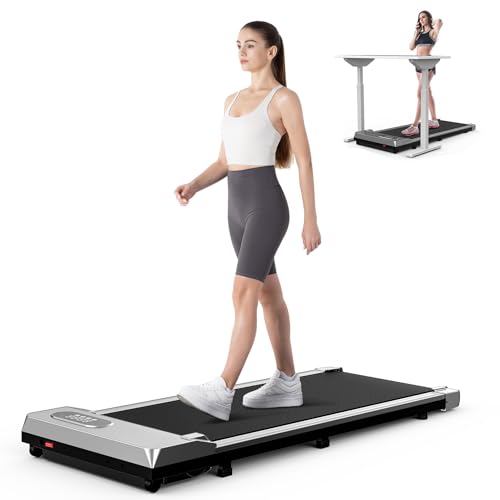Tread Mill's History History Of Tread Mill
Treadmills: A Comprehensive Guide to Understanding Their Functionality, Benefits, and Appropriate Selection
Introduction
Treadmills have actually become a staple in modern-day physical fitness routines, both in homes and fitness centers worldwide. They offer a practical and effective method to preserve cardiovascular health, increase endurance, and assist in weight management. This short article explores the various types of treadmills, their benefits, features to think about when purchasing, and some FAQs to assist users in making informed choices.
Kinds of Treadmills
When it comes to choosing a treadmill, it is vital to comprehend the different types offered in the market. Here are the main classifications:
1. Manual Treadmills
- System: These treadmills have an easy style and count on the user's efforts to move the belt.
- Pros: More inexpensive, quieter operation, no electrical energy needed.
- Cons: Limited features, might not provide the same variety of workout strength.
2. Motorized Treadmills
- System: Powered by a motor that drives the belt, allowing users to stroll or perform at a set speed.
- Pros: Greater variety of speeds and inclines, equipped with various functions such as heart rate displays and exercise programs.
- Cons: More pricey and might require more upkeep.
3. Folding Treadmills
- System: Designed for those with restricted area, these treadmills can be folded for simple storage.
- Pros: Space-saving, typically motorized, flexible features.
- Cons: May be less long lasting than non-folding models.
4. Industrial Treadmills
- Mechanism: High-quality machines designed for use in gyms and gym.
- Pros: Built to withstand heavy use, advanced features, typically include service warranties.
- Cons: Pricey and not perfect for home usage due to size.
5. Curved Treadmills
- System: A distinct style that enables users to move the belt using their own energy.
- Pros: Offers a more natural running experience, promotes much better running type.
- Cons: More pricey and can be noisier.
Treadmill Type
Pros
Cons
Manual
Economical, no electrical power needed
Limited functions
Motorized
Variety of speeds, advanced features
Upkeep needed
Folding
Space-saving, typically motorized
May lack durability
Commercial
Built to last, professional-grade features
Costly
Curved
Natural running experience, promotes good kind
Higher rate
Advantages of Using Treadmills
Treadmills offer many advantages that can contribute to one's overall health and wellness objectives. Some of these benefits include:
- Convenient Workouts: Treadmills enable users to work out inside despite weather condition conditions.
- Cardiovascular Health: Regular usage can enhance heart health by increasing endurance and promoting healthy flow.
- Weight Management: Effective for burning calories, which assists in weight loss and management.
- Adjustable Workouts: Users can control speed, slope, and period to create personalized exercise experiences.
- Safety: Treadmills supply a predictable surface, reducing the risk of falls compared to outside running.
- Multifunctional: Many treadmills come with features like heart rate displays, workout programs, and even home entertainment systems.
Picking the Right Treadmill
When picking a treadmill, prospective buyers ought to consider several key elements:
Features to Consider:
- Motor Power: Typically determined in horsepower (HP), a motor strength of at least 2.5 HP is recommended for severe runners.
- Belt Size: A longer and wider belt accommodates various stride lengths, offering comfort during exercises.
- Slope Settings: Adjustable incline features imitate outside hill running and can increase exercise strength.
- Weight Capacity: Ensure the treadmill can support the user's weight for safety and durability.
- Console Features: Look for user-friendly control panels, exercise programs, and Bluetooth compatibility for streaming music or other functions.
Budget Considerations
- Under ₤ 500: Entry-level manual treadmills appropriate for casual walkers.
- ₤ 500 – ₤ 1,500: Mid-range motorized treadmills that offer more functions and better resilience.
- ₤ 1,500 – ₤ 3,000: High-end designs with sophisticated technology, larger motors, and longer service warranties.
- Over ₤ 3,000: Commercial-grade treadmills perfect for frequent usage in health clubs or training centers.
Frequently Asked Questions (FAQs)
1. How frequently should I utilize a treadmill?
It is recommended to use a treadmill a minimum of three to 5 times a week, integrating various intensity levels for best results.
2. Can I reduce weight by utilizing a treadmill?
Yes, constant use of a treadmill can add to weight reduction, specifically when integrated with a balanced diet and strength training.
3. What is the very best speed to walk on a treadmill for newbies?
A speed of 3 to 4 miles per hour is an appropriate variety for newbies. It's important to start slow and slowly increase speed as convenience and endurance improve.
4. Do check out this site need to utilize a treadmill if I already run outdoors?
Utilizing a treadmill can provide fringe benefits, such as regulated environments and differed workouts (slope, intervals) that are not constantly possible outdoors.
5. How do I keep my treadmill?
Regular upkeep includes lubricating the belt, cleaning the deck and console, and examining the motor for optimal performance.
Treadmills are essential tools for those aiming to enhance their physical fitness levels in a controlled and convenient manner. With different types offered, understanding their features and benefits is crucial for making an informed purchase. By considering personal exercise requirements, space accessibility, and budget restrictions, individuals can discover the most suitable treadmill that fits their way of life. Incorporating treadmill workouts into a well balanced physical fitness routine can result in enhanced health outcomes and a satisfying exercise experience.
